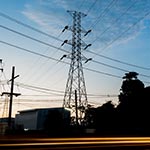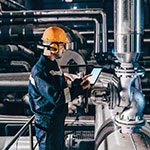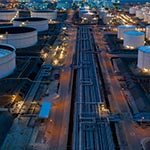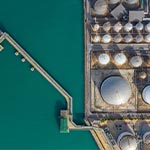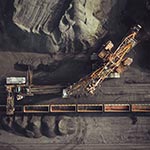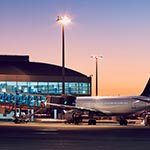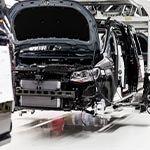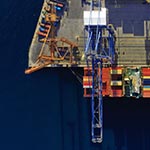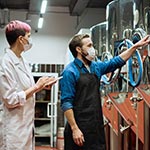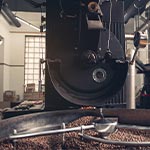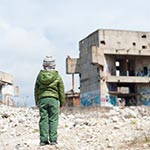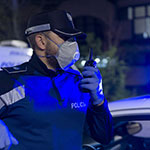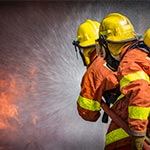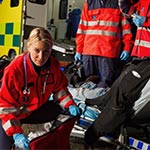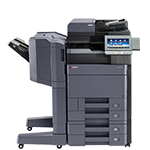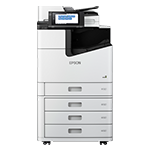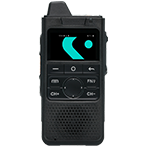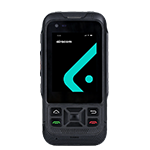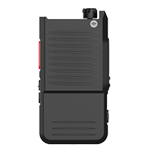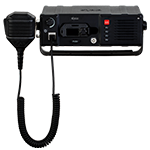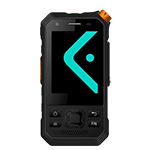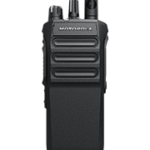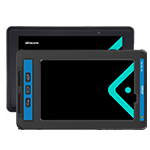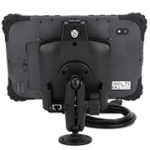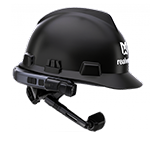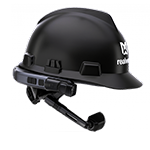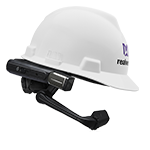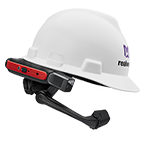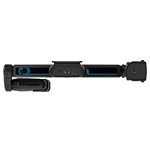ATEX Certified
Equipment for potentially explosive atmospheres
ATEX certification (ATmosphères EXplosibles) is a European Union directive that provides guidelines for the design, selection, installation, inspection, maintenance, and repair of equipment intended for use in potentially explosive atmospheres.
Companies and employees operating within a potentially explosive atmosphere must pay attention to the laws defined by the European Commission and by those national authorities who enforce the standardisation of equipment and safety systems designed for safe operation in potentially explosive atmospheres (ATEX) for the protection of human life and the operating asset.
ATEX provides guidelines for the design, selection, installation, inspection, maintenance, and repair of equipment used in potentially explosive atmospheres. It is applicable to various industries and is essential for ensuring the safety of workers, equipment, and the environment.
What is a potentially explosive atmosphere, and how is it caused?
A potentially explosive atmosphere is a mixture of flammable substances in the air, such as gases, vapours, dust, or fibres, which, in combination with air, can ignite and cause an explosion. This can be caused by various factors, including chemical reactions, improper storage or handling of flammable materials, and equipment or machinery generating sparks or heat. Various factors can cause a potentially explosive atmosphere. Chemical reactions, such as oxidation or polymerisation, can release flammable gases or vapours into the air. Flammable materials, such as gasoline, solvents, or chemicals, can release vapours if not stored or handled correctly. In some industries, such as mining, woodworking, food production and paper mills, dust or fibres can accumulate and become a fire or explosion hazard.
Ignition sources, such as sparks or heat, can come from a range of sources, including electrical equipment such as mobile devices, smartphones and tablets. In addition to static electricity from workwear, open flames, hot surfaces, or welding or cutting operations. Any of these sources can ignite a potentially explosive atmosphere and cause an explosion. As a result, the European Union has a series of legal frameworks and guidance documents for companies operating within hazardous areas.
Where are ATEX protective systems and equipment used?
ATEX protective systems and equipment are used in environments where there is a risk of explosion due to the presence of flammable substances in the air. This includes a wide range of industries and applications, such as oil and gas, chemical manufacturing, pharmaceuticals, food processing, and mining.
In these industries, ATEX equipment is used to prevent ignition sources and manage the risk of explosions. This can include explosion-proof enclosures for electrical equipment, intrinsically safe mobile devices, dust and gas sensors, and fire suppression systems.
ATEX protective systems and equipment are designed to meet specific safety standards and regulations, such as the European Union’s ATEX directive, which sets out requirements for equipment and protective systems used in potentially explosive atmospheres. By using ATEX equipment, businesses can reduce the risk of explosions and protect their workforce and assets.
Equipment and protective systems intended for use in a potentially explosive atmosphere can cover a range of locations, including the following operational locations plus many more not listed below:
Understanding atex certification (zones)
ATEX zones signify potentially explosive atmospheres
ATEX designates zones based on the likelihood and duration of a potentially explosive atmosphere occurring. This provides guidance when selecting equipment and protective measures to manage the risk of explosions in different areas of the workplace. ATEX zones are an essential consideration for businesses operating in industries with a risk of explosions to ensure workplace safety.
ATEX zones designate areas based on the likelihood and duration of a potentially explosive atmosphere occurring. There are two main types: Zone 0/20 and Zone 1/21/2/22. Zone 0/20 refers to areas where a potentially explosive atmosphere is present continuously or for long periods, while Zone 1/21/2/22 refers to areas where a potentially explosive atmosphere may occur under normal operating conditions. ATEX zones provide guidance for selecting equipment and protective measures to manage the risk of explosions in different areas of the workplace.
Gases
Category
Gas groups are divided into subgroups based on the minimum ignition current and maximum experimental safety gap.
Zone 0
Ex II 1G
Where an explosive atmosphere is continuously present or present for long periods.
Zone 1
Ex II 2G
Where an explosive atmosphere is likely to occur in normal operation.
Zone 2
Ex II 3G
an area in which an explosive mixture is not likely to occur in normal operation and if it occurs it will exist only for a short time.
Dusts
Category
Explosive dust atmospheres consist of a mixture of the air with flammable substances in the form of dust or fibres.
Zone 20
Ex II 1D
An area in which an explosive mixture is continuously present or present for long periods.
Zone 21
Ex II 2D
An area in which an explosive mixture is likely to occur in normal operation
Zone 22
Ex II 3D
An area in which an explosive mixture is not likely to occur in normal operation and if it occurs it will exist only for a short time.
Dust Groups
Types of Dust
Dusts are divided into sub groups with IIIC dust’s are the most dangerous, while IIIB dust’s are classed as more dangerous when there is an electrostatic charge.
IIIC
Conductive Dusts
Graphite Powder, Toner
IIIB
Non-Conductive Dusts
Milk Powder, Powdered Sugar, Flour
IIIA
Fibres
Saw Dust, Tabacco
EU Legislation and ATEX certification
The EU legislation for the control of explosive atmospheres is commonly referred to as the ATEX directive. ATEX is short for “Atmosphères Explosibles,” which is French for explosive atmospheres. The directive 2014/34/EU was introduced to harmonize safety standards for equipment and protective systems used in potentially explosive atmospheres throughout the European Union.
The ATEX directive sets out the minimum safety requirements for equipment and protective systems used in potentially explosive atmospheres. This includes requirements for the design, construction, and testing of equipment and systems to ensure they are safe to use in hazardous environments. It also includes requirements for the identification and classification of hazardous areas, as well as the selection and use of appropriate equipment and protective measures.
The directive applies to a wide range of industries and applications, including oil and gas, chemicals, pharmaceuticals, food processing, and mining. Any business operating in a potentially explosive environment in the European Union is required to comply with the ATEX directive.
In summary, the ATEX directive is EU legislation that sets out minimum safety requirements for equipment and protective systems used in potentially explosive atmospheres. It ensures that equipment and systems are designed, constructed, and tested to be safe to use in hazardous environments, and that appropriate equipment and protective measures are selected and used to manage the risk of explosions.
The ATEX directive is aligned with the new legislative framework policy, and is applicable from 20 April 2016 replacing the previous Directive 94/9EC.

Who implements the ATEX directive?
The ATEX directive is implemented by national regulatory authorities within the European Union. Each member state designates a competent authority responsible for enforcing the directive and ensuring compliance with its requirements.
The competent authorities are responsible for approving equipment and protective systems intended for use in potentially explosive atmospheres and verifying that they meet the ATEX requirements. They also carry out inspections and audits to ensure that businesses are complying with the directive and taking appropriate measures to manage the risk of explosions.
In addition, manufacturers and suppliers of equipment and protective systems intended for use in potentially explosive atmospheres are required to ensure that their products meet the ATEX requirements before placing them on the market. This includes obtaining the necessary conformity assessment certificates and ensuring that the products are labelled with the appropriate markings and information.
Where can I find further guidance and support for ATEX certification guidelines?
You can find guidance documents that are approved by the formal ATEX committee working group and made available to assist those who need to apply the directive.
The ATEX working parties comprise of the committee, the working group of the committee, the administrative cooperation (AdCo) group, and the European coordination of the notified bodies group (ExNBG).
ATEX certification standardisation
The European harmonised standards for ATEX Directive 2014/34/EU are produced by the European standardisation organisations.
Global Certifications
Global certification schemes for electronic equipment designed for use across hazardous areas
Mobile devices and communications equipment reliably tested and certified for safe operation across major industries around the world. Each industry requires focused expertise to ensure product certification that adheres to strict national and international standards.

IECEx Certified.
The internationally accepted standard by organisations for the safe use of equipment within hazardous areas.
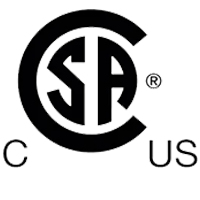
CSA Certified.
The Canadian standard is widely adopted by companies in North America and meets North American Standards.

EAC Ex Certified.
Is the Eurasian Conformity certification for organisations operating within the EAEU, including Russia.

InMetro Certified.
Accreditation body of Brazil. Equipment must conform to INMETRO standards for use in hazardous areas.

KCs Certified.
The Korean Occupational Safety and Health Agency. KOSHA. Required for all hazardous area safety equipment.

JNIOSH Certified.
The Japanese standard and certification from the National Institute of Occupational Safety and Health.

SANS Certified.
SANS is the South African National Accreditation System which governs the use of hazardous area devices.

